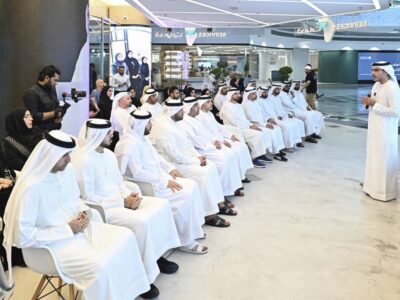With the height of the pandemic behind us, the UAE government has lifted requirements to work from home, and while specific arrangements are at the discretion of employers, there has been a notable move towards getting people back into the office.
This is a global trend; Twitter has reopened its doors, while Google, a long-time proponent of the traditional office set-up, has started to bring employees back to offices in some regions. At Avaya, we continue to re-open offices across the globe.
But while devising workplace policies, companies can’t ignore the fact today’s workforce looks very different from that of 2019.
According to a study commissioned by Avaya, 64 percent of UAE workers consider the ability to work remotely as a driver of happiness. In addition, the study found that the UAE’s workforce is the world’s best equipped for remote working.
Given the investments business have made in remote working, and employees’ preferences for it, it’s entirely impractical to squeeze these workers back into a 2019-shaped box.
Take working parents, for instance, who over the past two years have funnelled the time traditionally spent commuting to and from the office into packing lunches, driving to school, attending swimming lessons and helping with homework.
And let’s not forget people who enjoy hybrid work, and feel more productive and appreciated under this model. The aforementioned study shows that 40 percent of UAE employees actually worry about working from home forever, meaning that a key requirement for business success will be building a hybrid model of work.
To keep employees of all stripes happy and productive, organisations need to align hybrid work policies with this new, digitally-enabled environment by dismantling barriers to productivity and connectedness in a way that traverses physical location.

Borrowing lessons from the past two years
Back in 2020, many organisations responded to work-from-home mandates by hastily rolling out video conferencing tools to get the workforce online as quickly as possible. Little thought was given to how these measures would deal with the various, and often unpredictable, challenges that emerged during the pandemic.
Two years later, and we’ve seen the most successful organisations not only address those challenges, but turn the prevailing conditions into opportunities to create a freshly engaged workforce – one that isn’t bound by location.
But others have fatigued their workers with baseless rhetoric. Many still yearn for company policy that is backed by meaningful, structural change, as well as tangible investment in the technologies they need to do their jobs.
Under a hybrid work model, employees should be encouraged to set their own work hours, and disconnect at times of their choosing, depending on their individual needs.
They should also have a means to collaborate and share with their colleagues, and access all the digital tools they need for their roles, whether they are in the office or not, even if it means increased spend for the organisation – and they should be measured by the results that come out, rather than the effort that goes in.

Staff also need to feel supported personally and professionally, with their mental well-being at the forefront of hybrid work considerations.
According to a recent study, UAE workers are among the most stressed in the world, and organisations would do well to address this trend when building out hybrid work strategies.
The final point to consider is that, with digitalisation at the centre of hybrid work, it’s critical that bringing new technologies into the mix doesn’t culminate in a “the boss is watching” perception among the employees.
Hybrid work can’t be forgotten as office doors reopen, and that means ensuring the evolved needs of the UAE’s workers becomes the driving force behind business decisions and policy.
If not, workplace productivity and morale will suffer, with obvious implications for our industries and people – and your best talent might just walk away.





